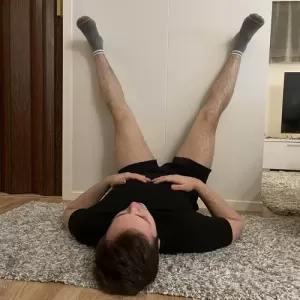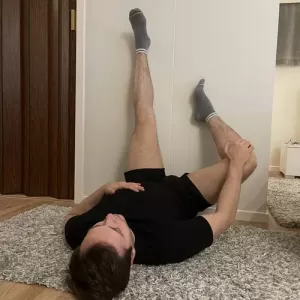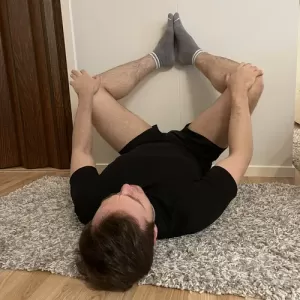5 Pectineus Stretch Exercises for Optimal Knee and Hip Functionality
In this article, I will provide a comprehensive guide on how to stretch the pectineus muscle, including 3 exercises and their detailed instructions.
Additionally, I will discuss the function of the pectineus muscle and the benefits of stretching it, including reduced pectineus pain.
Pectineus Stretch Guide
Take a look at these effective stretches for pectineus that you can perform even if you aren’t too flexible in your inner tight.
Pectineus Wall Stretch
Lay down on your back and place your both legs on a wall.
While keeping your legs in contact with the wall, slide sideways.
Repeat this movement ten times more.
Pectineus Wall Stretch With Knee Flexion
- Lay down on your back.
- Place both legs on a wall.
- Bend one knee approximately 90 degrees.
- Push your knee with your hand to the wall, stretching your pectineus muscle.
- Hold this position for 30s.
Wall Stretch With Both Knees in Flexion
- Starting position is the same as mentioned above.
- Now bend both of your knees and push them with your hands towards the wall.
- Hold this stretch for 30s.
Function of Pectineus
The pectineus muscle is primarily responsible for hip flexion and adduction, meaning it helps to lift the thigh towards the torso and also moves the thigh closer to the midline of the body.
An example of a specific movement or activity where the pectineus muscle is utilized is running.
As the leg swings forward during each stride, the pectineus muscle contracts to bring the thigh closer to the torso, which helps to generate the force necessary for propulsion.
Additionally, as the foot hits the ground, the pectineus muscle helps to stabilize the hip joint, preventing excessive movement and reducing the risk of injury.
Benefits of Stretching Pectineus
Stretching the pectineus muscle is essential for maintaining flexibility and improving lower body functionality.
Here are some benefits of pectineus stretch, along with examples of how they can improve your overall health and fitness:
- Reduces risk of injury: Tightness in the pectineus muscle can increase the risk of injury during activities such as running, cycling or rowing. Stretching this muscle helps to increase flexibility and reduce muscle tension, lowering the risk of strains or pulls.
For example, if you’re a runner, incorporating pectineus pain exercises and stretches can help to reduce the risk of knee or hip injuries caused by tightness in the pectineus muscle.
- Improves posture: The pectineus muscle is one of the key muscles involved in maintaining good posture. Stretching this muscle helps to improve alignment and reduce tension in the hip and lower back, leading to better posture and reduced back pain.
For example, if you spend a lot of time sitting at a desk, stretching the pectineus muscle can help to counteract the effects of sitting and improve your overall posture.
- Enhances athletic performance: The pectineus muscle plays an essential role in many athletic movements, such as running and jumping. Stretching this muscle can improve your range of motion and overall performance, helping you to run faster, jump higher and move more efficiently.
For example, if you’re a basketball player, stretching the pectineus muscle can help to improve your jumping ability and reduce the risk of injuries caused by muscle tightness.
- Reduces pain: Tightness in the pectineus muscle can lead to pain and discomfort in the hip and groin region. Stretching this muscle helps to release tension and reduce pain, leading to improved comfort and flexibility.
- Improves flexibility: Stretching the pectineus muscle helps to improve overall flexibility and range of motion in the lower body. This can lead to increased mobility and improved performance in a variety of activities.
Conclusion
Incorporating pectineus stretch into your fitness routine is essential for optimal knee and hip functionality. By performing these three pectineus muscle stretch exercises and learning about the function of the pectineus muscle, you can improve your flexibility, mobility, and posture, while reducing pectineus pain.
Make sure to add pectineus pain stretch exercises to your daily routine to enjoy a healthier and more active lifestyle.



